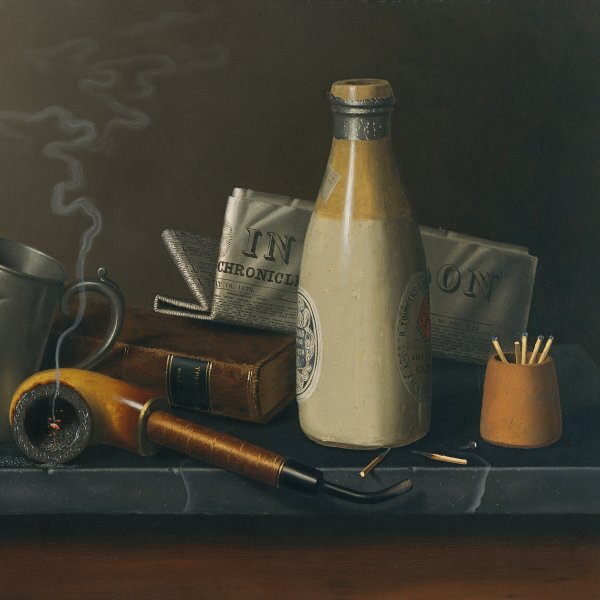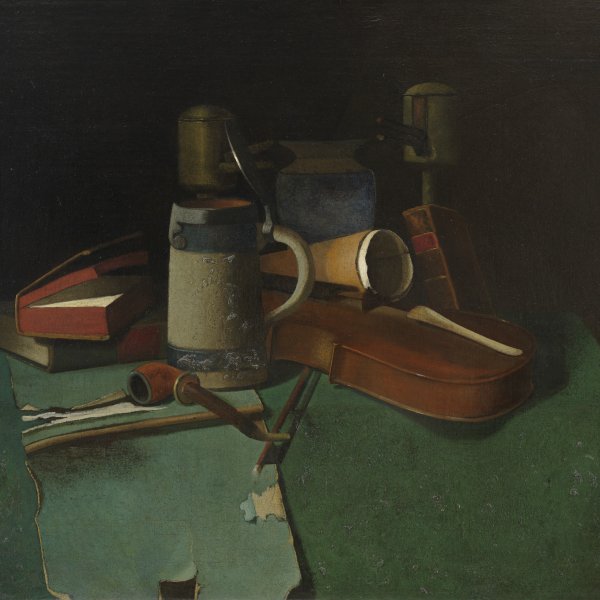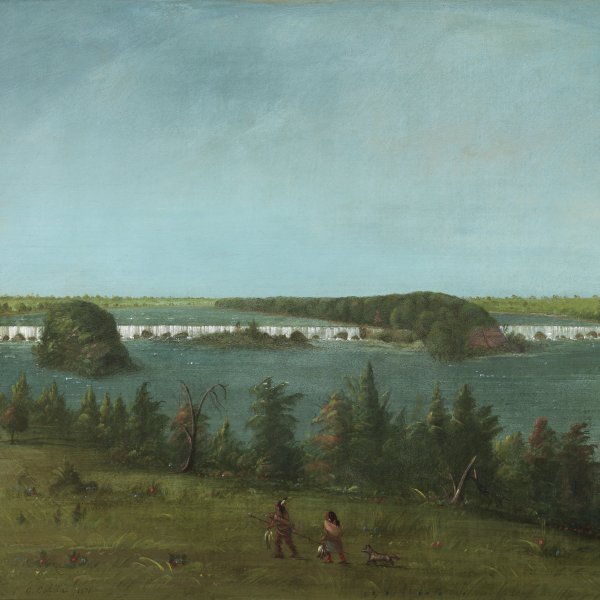Children on the Beach
ca. 1879 - 1881
Oil on canvas.
20 x 25.5 cm
Carmen Thyssen Collection
Inv. no. (
CTB.1989.16
)
Not on display
Level 2
Permanent Collection
Level 1
Permanent Collection
Level 0
Carmen Thyssen Collection and Temporary exhibition rooms
Level -1
Temporary exhibition rooms, Conference room and EducaThyssen workshop
At the middle of the 19th century, Coney Island was relatively isolated. In 1849 the poet Walt Whitman extolled its beaches as the "long, bare, unfrequented shore, which I had all to myself, " and after bathing in the nude, he would run along its hard sands "and declaim Homer or Shakespeare to the surf and the seagulls by the hour." By the early 1880s, when Carr painted his canvases of Coney Island, the seashore was proclaimed the "Greatest Watering-Place in the World." Over a million and a half people travelling by steamboat landed at the old pier at West Brighton Beach in 1882; one of the numerous railroads to Coney Island recorded in the same year that its route ran to the Brighton Beach Hotel over 57 trains daily in the summer, but that "on holidays the number is materially increased." Coney Island at this time was divided into four distinct sections: its western end, Norton's Point, the original Coney Island, had assumed an unsavoury reputation as an area frequented by con men; West Brighton was the landing point for the steamboat traffic of the excursionists; Brighton Beach became the centre of fashionable Coney Island for the populace; and Manhattan Beach was the exclusive eastern-most part, where "the French 'bonnes, ' wearing outlandish dresses and trimmings" cared for toddling infants and where street merchants and showmen were prohibited. Although many of Carr's canvases illustrate the more commercial West Brighton section of Coney Island with its acrobats, donkey rides, Punch and Judy shows, photographers taking tintypes at five cents, and girls selling oranges, Children on the Beach appears to portray the more sedate Brighton Beach portion of the shore.
A boy wearing a straw hat with a wide band has rolled up his pant legs as he attempts to rescue the overturned toy sailing vessel that a girl and her older companion had set sail in a tidal pool. The younger girl wearing a white dress with pink sash is holding a shovel, which could either be used for building sandcastles or for calming, while nearby is a green bucket with yellow banding. The distant figures are oblivious to the action taking place in the foreground: a woman in strict profile gazes out to the sea, while to the left, smaller figures, which are almost diminutive equivalents of the foreground protagonists, wade in the breaking surf. The artist's use of photography, as well as the possible influence of the camera obscura, has always remained a question in Carr's work which is suggested by the studied nature of his figures. Rarely do his bathers relate to each other. They appear in his beach scenes isolated from their companions as though in a hermetically sealed bell-jar. Yet there is no documentation that Carr, himself, was a photographer, and the popular camera obscura at West Brighton reflected primarily images of the adjacent buildings.
Carr's paintings of the seashore often seem to reflect a narrative sequence and two other canvases by Carr appear to relate directly to Children on the Beach. However, it cannot be determined whether or not they were painted in a chronological order, and the different sizes of the canvases militate against viewing them as a deliberately conceived sequence. Both paintings, Children on the Beach and Small Yacht Racing, 1881, Terra Museum of American Art, Chicago, show same figures and subject, but different episodes.
The random repetition of figures with their varied, but repetitive accessories, as well as the inconsistency of the shadows the bathers cast in his landscapes, indicate that Carr peopled his compositions from a stock set of motifs at his disposal. Drawings for Carr's paintings have never surfaced, but the person of his beach compositions are elements that the artist has freely interchanged from painting to painting, whether their source is from sketch-book drawings or from photographs the artist had purchased from Coney Island vendors.
Kenneth W. Maddox
A boy wearing a straw hat with a wide band has rolled up his pant legs as he attempts to rescue the overturned toy sailing vessel that a girl and her older companion had set sail in a tidal pool. The younger girl wearing a white dress with pink sash is holding a shovel, which could either be used for building sandcastles or for calming, while nearby is a green bucket with yellow banding. The distant figures are oblivious to the action taking place in the foreground: a woman in strict profile gazes out to the sea, while to the left, smaller figures, which are almost diminutive equivalents of the foreground protagonists, wade in the breaking surf. The artist's use of photography, as well as the possible influence of the camera obscura, has always remained a question in Carr's work which is suggested by the studied nature of his figures. Rarely do his bathers relate to each other. They appear in his beach scenes isolated from their companions as though in a hermetically sealed bell-jar. Yet there is no documentation that Carr, himself, was a photographer, and the popular camera obscura at West Brighton reflected primarily images of the adjacent buildings.
Carr's paintings of the seashore often seem to reflect a narrative sequence and two other canvases by Carr appear to relate directly to Children on the Beach. However, it cannot be determined whether or not they were painted in a chronological order, and the different sizes of the canvases militate against viewing them as a deliberately conceived sequence. Both paintings, Children on the Beach and Small Yacht Racing, 1881, Terra Museum of American Art, Chicago, show same figures and subject, but different episodes.
The random repetition of figures with their varied, but repetitive accessories, as well as the inconsistency of the shadows the bathers cast in his landscapes, indicate that Carr peopled his compositions from a stock set of motifs at his disposal. Drawings for Carr's paintings have never surfaced, but the person of his beach compositions are elements that the artist has freely interchanged from painting to painting, whether their source is from sketch-book drawings or from photographs the artist had purchased from Coney Island vendors.
Kenneth W. Maddox










